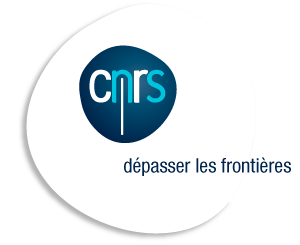Objective: Hydrothermal vent systems host seafloor massive sulfide (SMS) deposits that are typically rich in copper, zinc, gold, and silver. The primary scientific objective of a Working Group on Seafloor Mineralization would be to examine SMS deposit distribution, maturation and evolution and to investigate the processes (biological, chemical, geological) that are responsible for their formation and preservation. A sound scientific base of knowledge would both advance science but also inform the commercial and political world of the importance of these multi-faceted resources and encourage responsible development.
Chair - Maurice Tivey (WHOI, USA)
Group Members - Fernando Barriga (Portugal), Georgy Cherkashov (Russia), Jerome Dyment (France), Yves Fouquet (France), Mark Hannington (Canada), Jun-ichiro Ishibashi (Japan), Jonguk Kim (Korea), Lisa Levin (USA), Rachel Mills (UK), K. A. Kamesh Raju (India), Sven Petersen (Germany), Xuefa Shi (China), Ingunn Thorseth (Norway), and Cindy Van Dover (USA)
(Working Group formed in 2008; renewed for a further term in 2012)
Translations of mission statement: French, German; Korean; Spanish
2012 Update
The Seafloor Mineralization Working Group was renewed for a second term at the last InterRidge Steering Committee meeting in San Francisco in December 2011. Interest in the mineralisation resources at midocean ridges has continued unabated with the price of metals such as copper, gold and silver near historic highs and nations beginning to look at options for exploration of seafloor areas for polymetallic sulfide resources in “the area” under the regulations of the International Seabed Authority (ISA).
2012 Seafloor Mineralisation WG renewal proposal
A burgeoning interest in seafloor mineralization from many different viewpoints ranging from scientific research and conservation groups to commercial and national organizations was the original impetus for InterRidge forming a Seafloor Mineralization Working Group (SMWG) in 2008. While fundamental scientific research issues are at the core of the working group’s mission, it was also a vehicle to allow the scientific community to bring a unified voice to issues facing the discovery and use of metal-rich seafloor mineral resources.
2011 Update
The Seafloor Mineralization Working Group added a new member Dr. Sven Petersen from IFM-GEOMAR, Germany to its membership. Several Working Group members attended the 40th Underwater Mining Institute in Hilo, Hawaii, Sept 14-16th. It was the largest attendance of any UMI meeting in its recent history.
News flash from Seafloor Mineralization WG: articles in Oceanus and Mining Environmental Management magazines
The InterRidge Working Group for Seafloor Mineralization is mentioned in two recent magazine articles: - Oceanus magazine, 20 November 2009: "The Promise and Perils of Seafloor Mining," by Lisa Drew, Woods Hole Oceanographic Institution. - Mining Environmental Management magazine, October 2009: "Into the Deep," an article by International Marine Minerals Society (IMMS) Board Member and Secretary, Dr.
"Race to the Ridges" article in Marine Technology Reporter
"Race to the Ridges," an article in the Sept. 2009 issue of Marine Technology Reporter, highlights the workshop on deep-sea mining of seafloor massive sulfides that was convened earlier this year by the InterRidge Working Group on Seafloor Mineralization.
To access the PDF of this magazine issue, please go to:
http://former.seadiscovery.com/MTIssues/mt200909o2.pdf
To access the e-book, please go to:
http://dwp.marinelink.com/pubs/nwm/mt/200909/
2008 Update
Seafloor Mineralization
Working Group Update 2008
M. Tivey, Working Group Chair
Scientific questions and recommendations from the InterRidge Seafloor Mineralization Working Group
The InterRidge Working Group on Seafloor Mineralization (SMWG) has developed three groups of questions and recommendations to advance the scientific knowledge of seafloor massive sulfide (SMS) deposits:
What are the spatial controls on hydrothermal activity and SMS deposition?
What are the timescales for the evolution of SMS deposits?
What are the changes in biological communities that occur during the evolution of an SMS deposit?
Recommendations range from developing a list of criteria to quantify the extent of activity at a hydrothermal vent site, to using cutting‐edge technology to locate and characterize inactive deposits, to encouraging biological studies of inactive and extinct SMS deposits.
PDF file: InterRidge Seafloor Mineralization Working Group - 2009 Meeting Report
Seafloor Mineralization WG Discussion
This webpage is for Working Group Members only. If you are not a member of this WG, the page will be blank.
For WG Members: Please click open the "read more" (in blue), below.
Deep-Sea Mining Workshop and Colloquium
Deep-Sea Mining of Seafloor Massive Sulfides: A Reality for Science and Society in the 21st Century
1 - 2 April 2009, Woods Hole, Massachusetts (USA)
http://www.whoi.edu/workshops/deepseamining
2007 Seafloor Mineralization WG proposal
Click here for Seafloor Mineralization WG proposal
- Login to post comments




